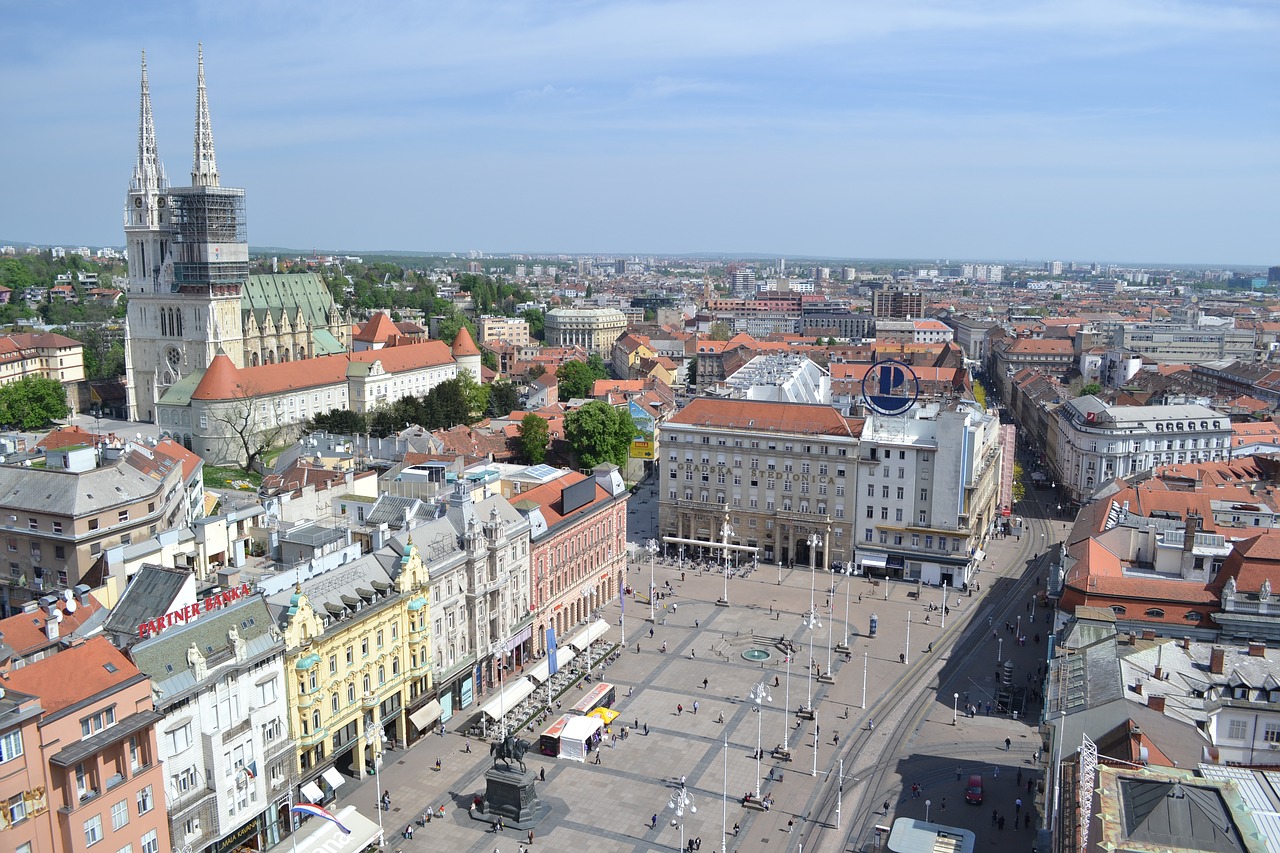
As instructed, we meet Max ‘”under the tail,” a popular meeting place (and expression) among Zagreb locals. The tail in question belongs to the statue of a horse in Jelacic Square, the square being the heart of the city centre and where we start our tour.
Once we’ve identified Max, we’re off to explore Zagreb on a walking tour that, by the end, will turn out to be a delightful mix of fascinating stories from the city’s complicated history, combined with enlightening information about the wonderful wine and cheese of Croatia.

Meeting “under the tail” in Zagreb | Photo by Zagreb Urban Adventures
After walking around Zagreb a bit we stop by the wonderful map-sculpture of Zagreb, which adds incredible colour and depth to the spots we’ve already visited. History can be entertaining and fun; Max’s knowledge of the history of his city is great and his pride apparent. The word he wants us to remember about Zagreb and Croatia is “multicultural,” an important aspect of what makes the destination so special.
Max’s knowledge of his country’s specialities and differences really adds to our evening. Swapping drinking customs, he explains the custom of adding water to wine (sparkling water to white wine, still water to red). He’s appalled at the Australian (British?) shandy (half-and-half beer and sparkling lemonade) yet he recommends red wine and coke.

Getting to know all about Zagreb | Photo by Fiona Maley
From the map, we walk up to the Cathedral (where they were permitted by the Vatican to conduct services in Croatian) and discover the reason for the much older wall around it. We also learn that the Cathedral purportedly imported it’s chandeliers from Las Vegas.
A 200-year-old cellar, owned by a Croatian-Australian, is just up the street. This is our first official stop and a map is rolled out as Max explains the four Croatian wine regions, with illustrative wine and cheese pairings to match. We start with the whites of Slavonia and the Danube, and move through to local Croatian uplands/Zagreb wines, through Istria (also home of the world’s best olive oil) and down to the ‘black’ (deep red-purple) wines of Dalmatia.
Along the way, we learn why lamb has different flavours depending on where the farm is, how Croatia has won the prize for the world’s best olive oil three years in a row, why cheese can be salty, the different food specialities around the country, and how Croatia is essentially five different countries in one, with different dialects and customs. We also finally learn why Zagreb is the City of Hearts. (You’ll have to take the tour to find out!)

Time for wine in Zagreb | Photo by Fiona Maley
Our second bar is modern and almost futuristic in comparison, and again features great wines, great information and delicious food. It’s later in the evening so the snacks are more substantial, and still nicely paired with the wines. Though we only visit two bars, they both have expert and enthusiastic sommeliers, and we recieve a comprehensive outline of Croatia’s wine regions, with substantial tastings and lots of cheese, seed bread and nibbles to accompany the wine.
The wines are luscious and we’ve even now discovered our favourite-ever red wine. Alas, we also learn that Croatia doesn’t export wine,-so we’ll just have to drink all that we can while we’re here.